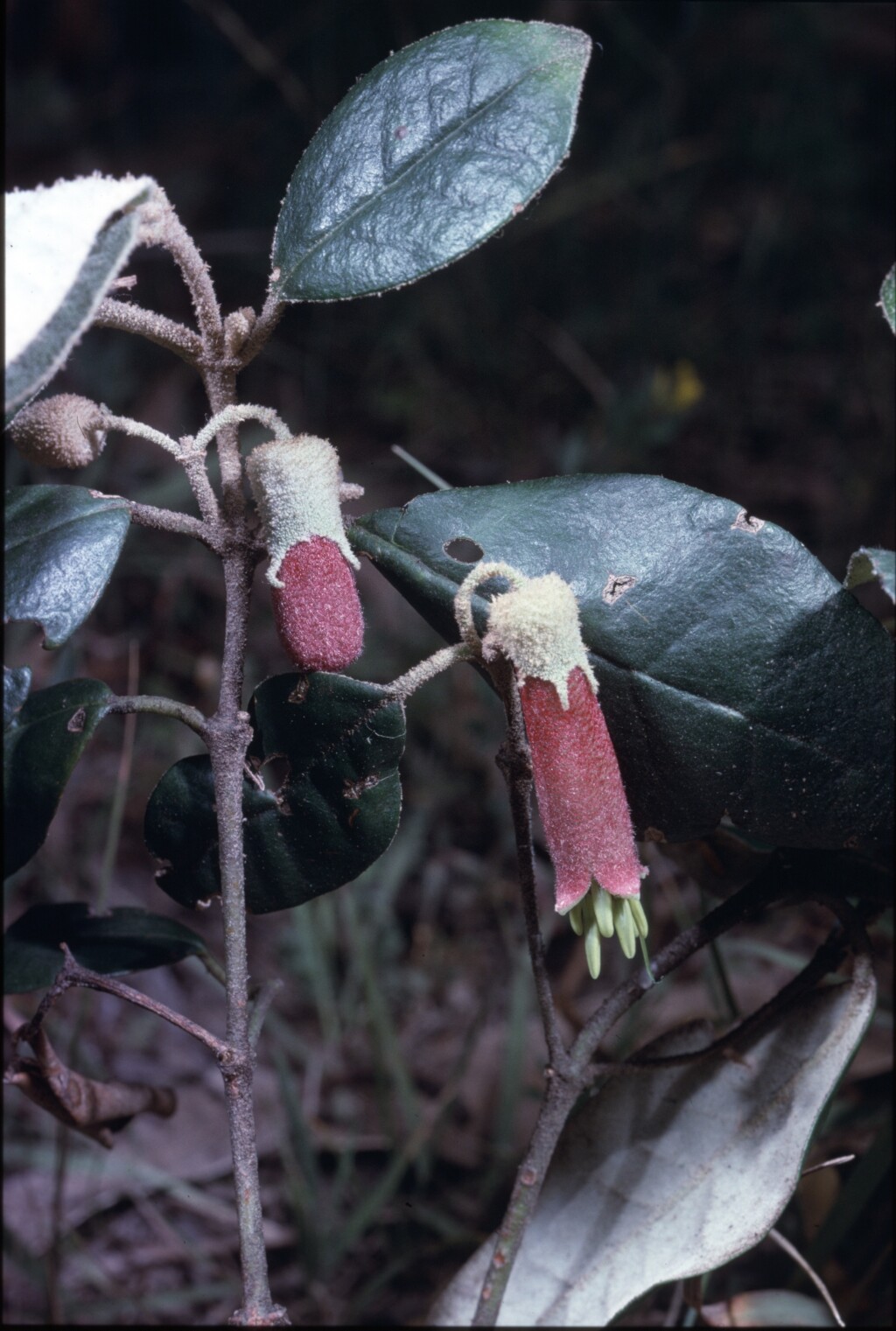Correa lawrenceana var. latrobeana
(F.Muell. ex Hannaford) Paul G.WilsonShrub or small tree to 16 m high. Leaves elliptic to ovate, 1.5–12 cm long, obtuse, cuneate to rounded at base, softly tomentose beneath. Inflorescence of 1–3 flowers, axillary and terminal to branchlets; peduncle to 5 mm long (terminal bracts minute and deciduous); pedicel 3–5 mm long. Calyx cup-shaped, 4–7 mm long, undulate on margin or with linear lobes to c. 5 mm long, rusty-tomentose; corolla cylindric, (1.5–)2–3 cm long, greenish-yellow or reddish-mauve. Flowers mostly spring.
GipP, CVU, NIS, EGL, EGU, HSF, HNF, OtR, Strz, MonT, HFE, VAlp. Also NSW. Occurs in eastern Victoria in damp, usually well-shaded eucalypt forest or dense scrubs, often along streams, sometimes in subalpine communities.
This variety is possibly a heterogenous assemblage. One notable variant from the Otway Range can reach 16 m in height. Some variably red or yellow-flowered plants currently included in var. latrobeana and occurring in elevated sites in the far east of the State (e.g. Nunniong Plateau, upper Snowy River area, Cobberas mountains) have very thickly indumented calyces, prominent calyx teeth and relatively short corollas. They may represent a distinct, but currently unnamed taxon.
Duretto, M.F. (1999). Rutaceae. In: Walsh, N.G.; Entwisle, T.J., Flora of Victoria Vol. 4, Cornaceae to Asteraceae, pp. 153–197. Inkata Press, Melbourne.
 Spinning
Spinning

